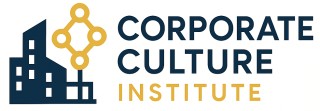
Understanding Leadership Goals
Defining Effective Leadership Goals
Setting effective leadership goals is a critical aspect of advancing corporate culture and ensuring the success of a team. These goals serve as a clear roadmap to enhance leadership skills, improve team dynamics, and drive business outcomes. An example of a leadership experience in corporate culture can provide real-world insights into goal setting and achievement. To define effective leadership goals, it's essential to consider the goals' specific, measurable, attainable, relevant, and time-bound (SMART) criteria. A SMART goal offers leaders a structured approach to tackle complex challenges within the company. Integrating these criteria not only aids personal development for leaders but also reinforces a constructive work environment.- Specific: Clearly outline the objectives to achieve, leaving no room for ambiguity. For instance, a leader may aim to enhance communication skills by organizing monthly feedback sessions with team members.
- Measurable: Establish criteria to track progress and measure success. For example, a leader might measure improvement by monitoring employee feedback scores over a set period.
- Attainable: Set realistic and achievable goals. Leaders should assess their resources and time constraints to ensure the goals can be met effectively.
- Relevant: Align goals with broader business objectives to ensure they contribute to the company’s success. Leadership goals should reflect priorities, like fostering a supportive leadership development environment.
- Time-bound: Define a timeline for achieving goals. Many leaders plan development goals within three months to maintain momentum and ensure timely progress.
Fostering a Collaborative Environment
Cultivating a Spirit of Innovation and Teamwork
In today's fast-paced business landscape, fostering a collaborative environment can significantly impact the success of a company. By cultivating a spirit of innovation and teamwork, leaders can effectively set the stage for achieving leadership goals. A collaborative environment encourages team members to share their unique perspectives and ideas, contributing to the realization of business objectives. Firstly, leaders must focus on building strong relationships among their team. Establishing trust and open communication channels allows employees to feel valued and heard. Regular team meetings and brainstorming sessions can facilitate this. Providing team members with structured opportunities to give and receive constructive feedback can further strengthen the sense of camaraderie and improve overall communication skills. Moreover, setting clear and time-bound goals can propel collaborative efforts. Employ the SMART goal framework to enhance clarity and direction. This methodology helps to ensure that goals are specific, measurable, achievable, relevant, and time-bound. As leaders define these target objectives, they should consider the individual development goals of their team members, providing guidance and support tailored to each employee's needs. Leadership development plays a pivotal role in sustaining a collaborative work environment. By investing in leadership training and workshops that focus on emotional intelligence, leaders set a precedent for open discourse and mutual respect. This fosters an inclusive atmosphere where each member feels equipped to contribute their best effort towards the company's vision. Finally, nurturing a culture that embraces diversity and inclusion enriches the team's collective experience. Diverse teams bring together a wide array of experiences and perspectives, driving innovation and creative problem-solving. Encouraging diversity not only aligns with ethical business practices but also enhances the overall work environment, making it more adaptive and resilient. For more insights on creating an impactful leadership strategy, consider exploring further resources on crafting an effective leadership statement. This will aid leaders in aligning their efforts with broader organizational goals.Enhancing Communication Skills
Elevating Communication Proficiency
Fostering Clear and Constructive Feedback Effective communication in corporate settings is vital to achieving leadership goals and ensuring a smooth workflow. Providing constructive feedback is a core component that helps improve team dynamics and employee performance. When leaders devise communication strategies, they must clarify objectives and convey expectations in a manner that resonates well with team members, enhancing overall communication skills in the process. Understanding Emotional Intelligence Leaders who integrate emotional intelligence into their leadership style are often more adept at interpreting and responding to the emotional cues within their teams. Developing this skill is critical, as it leads to higher engagement and better relationships. Emotional intelligence aids in the creation of a supportive work environment, where employees feel comfortable sharing ideas and voicing concerns, thereby improving the overall effectiveness of communication. Incorporating SMART Goals for Communication Development Establishing SMART goals (Specific, Measurable, Achievable, Relevant, Time-bound) can provide leaders with a structured path to refine their communication skills. An example goal might involve setting aside dedicated time each week to actively listen to team member feedback and adjust communication practices accordingly over the next three months. This not only enhances the leader's communication skills but also supports the development goals of the entire team. Promoting Open Dialogue Creating avenues for dialogue encourages the free exchange of ideas and constructive criticism, which are paramount in a thriving corporate culture. By instituting regular team meetings and one-on-one check-ins, leaders can facilitate open dialogue, addressing individual and group challenges effectively. This leads to improved business communication and helps in fostering a collaborative environment where innovation can flourish. For more insights on nurturing a positive work environment and recognizing employee contributions, consider these creative ways to show employee appreciation that can reinforce trust and openness within your company.Promoting Diversity and Inclusion
Promoting Open-Minded Cultures and Broad Perspectives
In today's dynamic business environment, promoting diversity and inclusion is a pivotal component of effective leadership. Leaders strive to cultivate a work environment where diverse perspectives are not only welcomed but encouraged. This approach enhances organizational resilience by integrating a variety of insights, stemming from different backgrounds and experiences, which ultimately lead to more innovative solutions and strategies. To effectively promote diversity, leaders should actively set smart goals that prioritize diversity initiatives within their teams. This might include setting a specific goal for increasing diverse representation in the team over the next six months. By clearly defining time-bound diversity objectives, leaders convey a commitment to inclusive growth and development within the company. Another crucial facet of fostering inclusion is enhancing communication skills. Leaders can focus on improving their emotional intelligence, as it helps in understanding and appreciating differences among team members. As a result, leaders are better equipped to provide constructive feedback and constructive criticism, nurturing an atmosphere of mutual respect and collaboration. Creating such an inclusive ecosystem demands continued career development opportunities that harness diverse talents. Encouraging team members to engage in leadership development programs enriches their skills and broadens perspectives, fostering a sense of belonging and purpose. Implementing employee feedback systems is another strategy leaders can employ to improve the diversity framework. Feedback gathered over months can highlight areas where improvements are needed, helping to set new development goals and adjust the leadership direction accordingly. Incorporating diversity and inclusion into leadership goals reinforces the core values of a company, setting a positive example for team members and encouraging a fulfilling, unbiased work experience for all employees.Encouraging Continuous Learning
Encouraging a Culture of Continuous Improvement and Learning
Setting leadership goals focused on continuous learning can significantly benefit both leaders and their teams. Embracing a culture of development is key in the business environment, especially as it encourages both personal and professional growth.
One way to foster this development is by creating clear and time-bound goals using the SMART framework. These goals help leaders set achievable targets for their teams and track their progress over time, such as through three months benchmarks. A smart goal could involve improving specific skills pertinent to the company's needs, allowing employees to contribute more effectively to the organization’s objectives.
Moreover, leaders should strive to provide constructive feedback and encourage open communication between team members. This relationship-building aspect not only improves the overall work environment but also fosters emotional intelligence, a crucial skill in modern leadership. Constructive criticism, when delivered appropriately, helps team members identify areas for improvement and encourages a culture of continuous improvement.
Furthermore, supporting leadership development through courses, workshops, and other learning opportunities will ensure leaders remain adaptable and resilient. Companies that invest in the growth of their leaders and employees are often better positioned to navigate the challenges of the corporate world.
Lastly, over time, a company fostering a learning environment will naturally see an enhancement in creativity and innovation among its team. In turn, this sets the stage for a more engaged and motivated workforce that is better equipped to achieve its strategic goals and create a positive impact within the organization.
Building Resilience and Adaptability
Developing Resilience and Adaptability for Sustainable Leadership
In today's fast-paced business environment, resilience and adaptability stand as essential components in any leader's toolset. Navigating unforeseen challenges and rapidly changing circumstances requires robust skills in these areas. Achieving resilience ensures that leaders, teams, and entire organizations can withstand setbacks, learn from them, and emerge stronger. Resilience is not innate; it requires intention and practice. Leaders should prioritize building a culture where employees feel supported and encouraged to take on new challenges. Constructive feedback plays a pivotal role in this process. By offering thoughtful and supportive feedback, leaders can help their team members grow and adapt to new demands. Moreover, fostering adaptability will equip leaders and their teams to respond to future challenges with agility. Setting clear, time-bound goals for leadership development, such as quarterly reviews or leadership goals within a three-month timeframe, can be an effective way to encourage adaptability. This practice helps in identifying areas for improvement and leverages leadership development strategies to address them over a specified period. For example, a smart goal could be to nurture emotional intelligence among team leaders over three months. Emotional intelligence helps in managing relationships within the team and improves overall work environment. Developing this skill encourages better communication and understanding within the team, essential for adaptability. To integrate resilience and adaptability into a corporate culture, leaders should:- Encourage open communication to ensure everyone feels heard and valued.
- Provide resources and opportunities for continuous learning and skill development.
- Set example goals for growth, encouraging team members to pursue personal and professional development.
- Promote a feedback-rich environment where employees feel safe to share ideas and constructive criticism.













